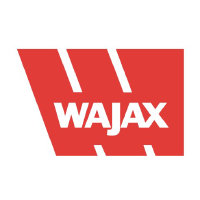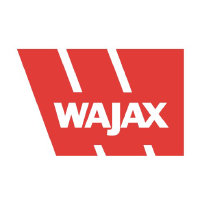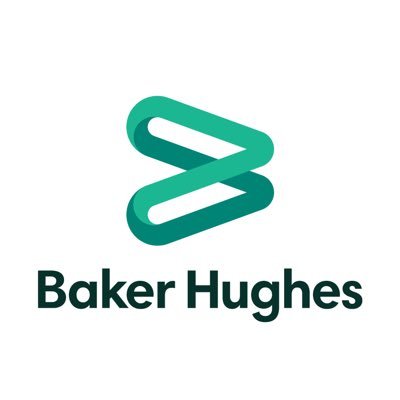
Wajax Corp
TSX:WJX

Earnings Call Analysis
 Summary
Q3-2023
Summary
Q3-2023
Wajax's third-quarter earnings unveiled revenue growth of 8% year-over-year to $509.7 million, driven by a boost in industrial parts and product support sales across regions. EBIT surged by 46% to $39 million due to higher sales volumes and product margins, partially offset by increased selling and administrative expenses. Gross profit margin expanded to 22.2%, increasing by 180 basis points. The backlog grew by 8.7% sequentially to $599.2 million, largely due to mining orders. Operating cash flow turned negative, consuming $62 million primarily because of timing in inventory payments. The company's leverage ratio rose to 2.16 times, surpassing the targeted range, mainly due to inventory investments and acquisitions. Despite supply chain concerns and macroeconomic challenges, Wajax anticipates growth in heavy equipment and steady demand in the industrial parts and ERS sectors.

























 You don't have any saved screeners yet
You don't have any saved screeners yet

Thank you for attending Wajax Corporation's 2023 Third Quarter Financial Results Webcast. On today's webcast will be Mr. Iggy Domagalski, President and Chief Executive Officer; and Mr. Stuart Auld, Chief Financial Officer.
Please be advised that this webcast is being recorded. Please note that this webcast contains forward-looking statements. Actual future results may differ from expected results.
I will now turn the call over to Iggy Domagalski.
Thank you very much, Jennifer. Good afternoon, and thank you for participating in our third quarter call. This afternoon, we will be following a webcast, which includes a summary presentation of Wajax's Q3 2023 financial results. The presentation can be found on our website under Investor Relations, Events and Presentations. I will provide you with a general update, and we'll then turn it over to Stu for comments on backlog, inventory, cash and the balance sheet.
To begin, I would like to draw your attention to our cautionary statement regarding forward-looking information on Slide 2 and the non-GAAP and other financial measures on Slide 3. Turning to Slide 4. This slide provides an overview of Wajax. The corporation has 165 years of Canadian operating history, operates across 124 branches with a team of over 3,100 employees, including more than 1,100 skilled technicians. During the quarter, our heavy equipment categories and revenue sources made up approximately 53% of our total revenue, while industrial products and ERS generated approximately 47%.
Turning to Slide 5. In the third quarter, Wajax saw a strong performance across key financial metrics. Revenue of $509.7 million was up $39 million or approximately 8% in the quarter. The increase in revenue resulted from increased industrial parts sales in all regions, higher product support sales in Western and Central Canada and higher ERS sales in Eastern Canada. EBIT of $39 million was up $12.3 million or approximately 46% in the quarter. The improved EBIT resulted primarily from higher sales volumes and higher product support margins, offset partially by higher selling and administrative expenses.
Gross profit margin of 22.2% increased 180 basis points compared to the same period of 2022 due to higher product support, equipment and ERS margins as well as a higher proportion of industrial parts sales. These increases were offset partially by lower industrial parts margins.
Selling and administrative expenses as a percentage of revenue decreased to 14.5% in the third quarter of 2023 from 14.7% in the third quarter of 2022. Selling and administrative expenses in the third quarter of 2023 increased $5 million or 7.2% compared to the third quarter of 2022 due primarily to higher personnel costs as the volume of business increased over the period.
Adjusted net earnings of $0.96 per share were up approximately 24% or $0.18 in the quarter, noting the adjustments recorded on this chart. At the end of Q3, the TRIF rate was 1.04, an increase of 11% from the third quarter of 2022. Third quarter TRIF was down 7% from the second quarter of 2023. Safety continues to be Wajax's #1 priority, and management is committed to continuously improving our safety programs to improve this result. I thank everyone on our team for their ongoing dedication to workplace safety.
Turning to Slide 6. Revenue increase of 8% in the third quarter resulted from growth in all regions. Western Canada sales of $233 million increased 4% in the quarter, mainly due to strong industrial part sales, material handling sales and product support revenue in the mining category. These increases were offset partially by lower equipment sales in the construction and forestry and mining categories.
Central Canada sales of $92 million increased 30% in the quarter due primarily to higher equipment sales in the material handling and construction and forestry categories as well as higher product support revenue in all categories and strong industrial parts and ERS sales.
Eastern Canada sales of $185 million increased 5% in the quarter, primarily to higher industrial parts and ERS sales, offset partially by lower equipment sales in the power systems category.
Please turn to Slide 7. An update on equipment and product support sales and year-over-year variances are shown on this page. Equipment sales of $126 million decreased $11 million or 8% compared to last year due primarily to lower construction and forestry sales and mining sales in Western Canada, offset partially by higher material handling sales in all regions.
Product support sales of $135 million increased $16 million or 14% due primarily to higher mining sales in Western Canada and higher power systems revenue in all regions. Please turn to Slide 8. An update on industrial parts and ERS sales and year-over-year variances are shown on this page. Industrial parts sales of approximately $161 million increase $26 million or 19% due to higher sales in all regions, particularly in Western and Eastern Canada. ERS sales of $77 million increased $7 million or 9% due to higher sales in Eastern Canada.
Moving to Slide 9. The slide summarizes sales at a category level for our company's overall groupings of heavy equipment and industrial parts and services. In the third quarter, heavy equipment categories increased $6 million or 2%, driven by higher sales in all categories, except construction and forestry. And total growth in industrial parts and services categories of approximately $33 million or 16% was driven by increases in both industrial parts and ERS. We continue to see growth in these less cyclical categories, and they remain a core element of our broader growth strategy.
I will now turn the call over to Stu.
Thanks, Iggy. Please turn to Slide 10 for my comments on backlog and inventory. Our backlog of $599.2 million increased $48 million or 8.7% compared to the backlog of $551.2 million at the end of Q2, and increased $40.5 million or 7.2% on a year-over-year basis. The sequential increase was due to higher mining orders offset partially by lower ERS and industrial parts orders.
Year-over-year increase was due to higher mining ERS and material handling orders offset partially by lower construction and forestry, industrial parts and power systems orders. Overall, our strong backlog reflects continued momentum in our heavy equipment, industrial parts and ERS businesses.
Inventory increased $33.9 million compared to Q2 2023 due primarily to higher equipment inventory in the construction and forestry and material handling categories and increased overall parts purchasing due to strong sales activity. Inventory increased $212.3 million compared to Q3 2022 due to an increase in most categories as a result of strong sales activity. The overall increase in inventory is driven by continued investment in parts and equipment to support customer orders and demand.
Please turn to Slide 11, where I'll provide an update on cash flow, leverage and working capital. Cash used in operating activities in the quarter of $62 million increased $58.6 million from cash used in operating activities of $3.4 million in Q3 2022, mainly due to a decrease in accounts payable and accrued liabilities during the quarter, driven largely by timing of inventory payments. Our leverage ratio increased to 2.16x from 1.76x in Q2, due to the higher debt level in the current period, driven largely by the corporation's investment in inventory, timing on repayment of accounts payable and accrued liabilities and cash paid for business acquisitions in the quarter.
Corporation's leverage ratio is currently above our target range of 1.2x to 2x at the end of Q3, primarily due to a sizable investment in inventory during the year and the acquisitions of Polyphase and Beta in the third quarter of 2023. Our available credit capacity at the end of Q3 was $90 million, which is sufficient to meet short-term normal course working capital and maintenance capital requirements and fund our acquisition program and planned strategic initiatives.
We continue to focus on working capital efficiency, which is a key component in managing our overall leverage targets. The Q3 working capital efficiency was 21.4%, an increase of 250 basis points from June 2023, due to the higher trailing 4-quarter average working capital.
Finally, the Board has approved our fourth quarter 2023 dividend of $0.33 per share payable on January 3, 2024, to shareholders of record on December 15, 2023.
Please turn to Slide 12. And at this point, I'll turn it back to Iggy.
Thanks very much, Stu. Our outlook is summarized on this slide. Wajax delivered strong organic growth in the first 3 quarters of 2023 with revenue of $1.612 billion, up 13.4% over the same period in 2022, and we saw adjusted basic earnings per share grow by 25.8% to $3.06.
During the third quarter, Wajax generated revenue of $509.7 million, up 8.3% over the prior year with meaningful growth in all regions led by Central Canada. In addition to strong organic growth, Wajax continued to execute its industrial parts and ERS acquisition strategy during the third quarter through the acquisitions of Polyphase Engineered Controls (1977) Ltd., Beta Fluid Power Limited and Beta Industrial Limited. These acquisitions add sought-after technical capabilities and expand the services Wajax offers to customers across the country.
After the first 9 months of 2023, we continue to see solid fundamentals in many of the markets we serve, particularly mining, energy and construction, supported by relatively elevated key commodity prices and sustained customer budgeting for capital projects. We expect growth in our heavy equipment categories and anticipate further strong demand in our less cyclical industrial parts and ERS categories.
For the balance of 2023, we expect -- we continue to expect challenges associated with supply chain volatility, although additional improvements are anticipated. Higher interest rates, wage and price inflation and the tight labor market are also expected to remain challenges. Management continues to monitor market dynamics and customer sentiment for signs of possible weakness.
Overall, we are very pleased with our Q3 performance as it represents a significant improvement over Q3 last year, including both strong top line organic growth and growth in our less cyclical and high-priority industrial parts and engineered repair services businesses. Our backlog continues to be robust, ending the quarter at a record $599.2 million, representing a sequential increase of almost 9% from an already strong backlog of $551.2 million in the second quarter. The strong backlog continues to underpin our confidence as we advance through the balance of the year.
Our core strategic priorities remain unchanged, and we are focused on continuing to invest in the people and their overall health and well-being, leveraging our enhanced relationship with Hitachi, delivering exceptional customer value, organically growing our business, transacting on a robust acquisition pipeline, prudently managing our balance sheet, deploying our ERP system and entrenching sustainability into our business.
I will now turn it back over to our operator, Jennifer, and open the line for questions.
[Operator Instructions] Your first question is from Devin Dodge from BMO Capital Markets.
Just wondering -- just going to ask about new equipment sales. There's a few moving pieces there. Just trying to help see if you can help us kind of reconcile the decline or year-over-year decline in new equipment sales. That's both on a year-over-year basis and quarter-over-quarter, with the material pickup in the equipment backlog as well as rising inventory. There's just a lot of pieces there? And how should we be thinking about the decline and maybe the path forward?
Yes. Thanks for the question, Devin. A few moving pieces there as you suggest. First one is construction and forestry was down. And as we mentioned in some of our commentary previously, forestry is down. Some of that is linked to the fires that were happening this year and just the new equipment not going out. So that's one piece. In mining, we had a -- our largest ultra-class mining shovel go out in the same quarter last year, whereas this year, we only had a smaller one in Q3. And we're starting to see some of our customers take units on RPO. And when those units go out in RPO, they stay on our inventory and get rented for a period of 6 months before most of them turn into a sale. So those are some of the moving pieces.
Okay. Okay. Given it seems like supply chain fluidity is improving. Presumably, you're seeing shorter lead times. How are you thinking about your inventory position, I guess, in a general sense, but also specifically relating to the buildup of inventory of Hitachi equipment?
Yes. I think we've seen our inventory build slow. We still added this quarter, but it has been slowing. We feel pretty good about the inventory levels where they currently are. I think there's always opportunities to do things a little bit better and a little bit leaner. But overall, we're pretty happy at these levels.
Okay. And then I'm just going to sneak in one last one here. Just kind of similar to the first question I had, just about ERS business. We tend to think of this as a fairly steady. So the quarter-over-quarter decline was a bit of a surprise, particularly given the contributions from recent acquisitions. Can you provide some -- just some context for kind of the moving pieces in the ERS business in Q3?
Devin, honestly, there isn't anything too specific to call out in that business for this quarter.
Your next question is from Michael Doumet from Scotiabank.
Just on the product support, nice increase in Q3. Obviously, good to see. So maybe wondering if you can give us some comments as to what drove the increase? And whether you're having better success with hiring and retention of technicians?
One of our priorities, Michael, is continuing to build the people-first company. Almost a year ago, we brought on a Chief People Officer, who's really helping us advance that mission, and it's still a tough market out there. Every day, more people are retiring than are starting into the field. And so I think it will be a battle for service technicians for the next decade as we get into the second half of the baby boomer retirement. So all things equal, I think we just need to build and continue to build a better employment brand, which we're starting to do. And so we're starting to see success there, and that in turn turns into lower attrition rates. And I think just happier people who are more productive. So generally, those are the high-level themes. This quarter, too, we did have pretty good technician utilization.
And I think maybe another piece, Michael, is we have made some investments in inventory, in construction, in mining, in forestry, and that appears to be paying off.
Very helpful. Good to hear. I guess turning to maybe a second question. In the quarter, we've seen interest rates rise quite dramatically. I'm just curious whether you're seeing that filter through to some of the customer conversations you're having, construction, energy, mining, where you're feeling maybe the incremental headwind the most in your opinion?
Good question. I think interest rates come up a lot in conversations with our customers and just in general. We -- when we think about our heavy equipment business, we do have the Hitachi's access finance in place now, which offers quite competitive rates. And our customers are happily using that, and we have a pretty good capture rate for selling our Hitachi units using those access finance. And although the conversations around interest rates are happening, we're not seeing it really affects our quote logs or our booking logs yet. Before the next question, Devin, you had asked a question about ERS decreasing. Just to confirm, quarter-over-quarter ERS revenues increased from $70.1 million to $76.7 million. So we're about $7 million ahead or 9% up in the quarter. So there was -- there were some additions from acquisitions and a little bit organic. But again, there's nothing really specific to call out in that business other than just a general upward trend.
And still strong backlog.
Your next question is from Michael Tupholme from TD Securities.
Obviously, pretty strong gross margin in the quarter. I understand that mix split apart in driving gross margins. Wondering if you can talk a little bit about how sustainable you see this level of margins you get [ to see ] in third quarter? Or if you did take the sales [ more commendable in the mix going forward ], if that makes a material difference to what they look like going forward?
Thanks for the question. We did have a great quarter for margins. We were almost 2% higher than the same quarter last year. So we are really happy with that. There's always a number of moving pieces within the margin. This quarter, specifically, was a very strong material handling quarter. And within that, there was a lot of used equipment, which typically tends to be higher margin. So that's a big part of the explanation that gave us the bump.
Also with a bit of lower construction and forestry revenue that adjusted our product mix to our more favorable margin businesses of IP and ERS. So there's -- a bit of a mix piece and a bit of a used material handling piece that played into the margin. In past calls, we've talked about our margins being about 20%, our gross profit margins. And we've been generally doing better than that. We still guide towards that. We have been doing better than that, and we feel pretty good about that.
Okay. That's helpful. And then if we look at SG&A as a percentage of revenue, it was incredibly low in the second quarter, a little bit higher here in the third quarter. Can you just sort of refresh as to how we should be thinking about that going forward? I think you've historically provided a range, but I think you were coming in better than you were sort of guiding to for a period of time there. So just not sure if anything has changed or if the prior range is still the way we should be thinking about that?
Yes. I think the range that we've talked about is 14.5% to 15.5%, and we've been pretty consistently delivering under 14.5%, and that's -- we're pretty happy with that. This quarter, just with the lower equipment sales, it made our SG&A percentage a little bit higher than that, but still well within our -- the range that we're comfortable with.
Okay. You had mentioned earlier that some customers are taking equipment on an RPO basis. Is this a change in approach that's in any way connected to sort of views on the market? Or is this just sort of a one-off situation. Just trying to understand what your -- what's driving that, what you're seeing there?
Yes. I think this is more reverting back to the norm. In a normal market prior to COVID, most sales that we would have made for excavators were off the lot and our competitors had lots of units on the lot as well. And so RPO is just another sales tool that our team has to get a customer into an excavator or into a wheel loader. And during the pandemic, there was very little inventory available. So we didn't have to do any RPOs. We prefer to sell them. RPO is the sales tool to get the units out the door. And now with -- we're getting a little bit of inventory back into our lots. And so our competitors, this is just a sales tool that's becoming used. I suspect it's happening across the board. But when I talk to our folks, I've been here 25 years, the COVID period was the only period in their 25-year history when we weren't extensively using RPOs. It is a normal part of the business.
And maybe a little bit more pronounced just because of the rate increase.
Got it. On the large mining shovel side, can you refresh us to what you had in the fourth quarter of last year and then what you expect in the fourth quarter of this year?
Yes, for sure. Q4 of 2022 was a very solid quarter for mining shovels. We had 3 large mining shovels and a few smaller ones as well. Q4 of this year, there is no large mining shovels. We do have an additional 4 large mining shovels in the backlog now, which were not there last quarter, and 2 of those are delivering mid-2024, and 2 of them are delivering mid-2025.
Perfect. And then just a question. In your outlook, you've got this sentence, and you mentioned here on the call, management continues to monitor market dynamics and customer sentiment for signs of possible weakness. I think that's -- well, I know that's new because it wasn't in the last quarter. Is that a function of just -- I mean, there's obviously some belief that we are going to enter a slower economic growth period here. Is that a comment in regard to just sort of what economists are looking for and expecting? Or is this a comment in regard to something you're actually seeing right now?
I think from our end, it's just -- we wanted to communicate very clearly that we're being very proactive on this subject. We're not seeing much weakness. We're still seeing strength in most of the sectors that we serve minus forestry. But we're watching and listening a lot more closely than we normally would just based on all the information that's in the news.
There are no further questions at this time. Please proceed.
Thank you very much, Jennifer. Thank you to all our callers. We appreciate you dialing in today. Have a great afternoon.
Thank you. Ladies and gentlemen, the conference has now ended. Thank you all for joining. You may all disconnect.